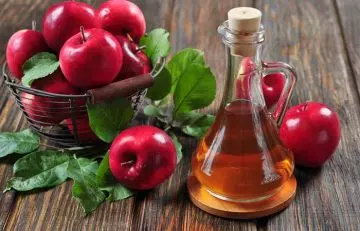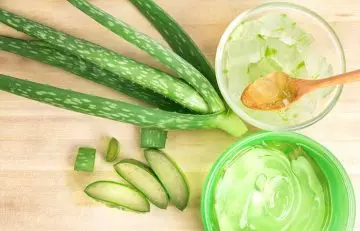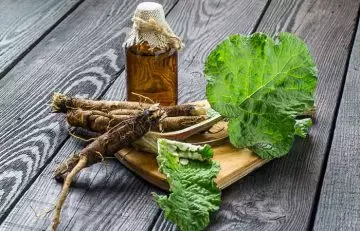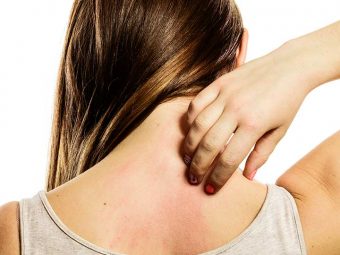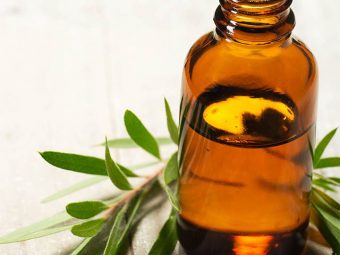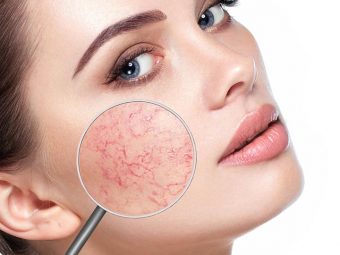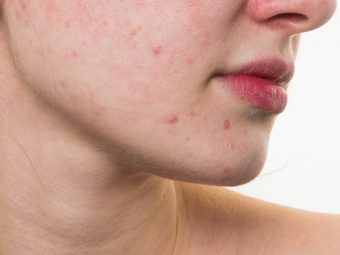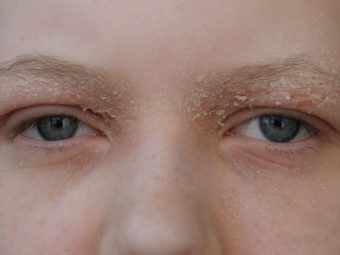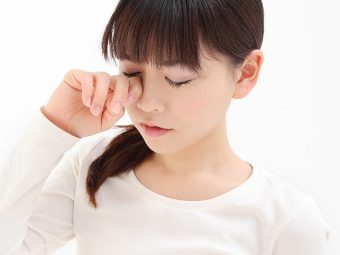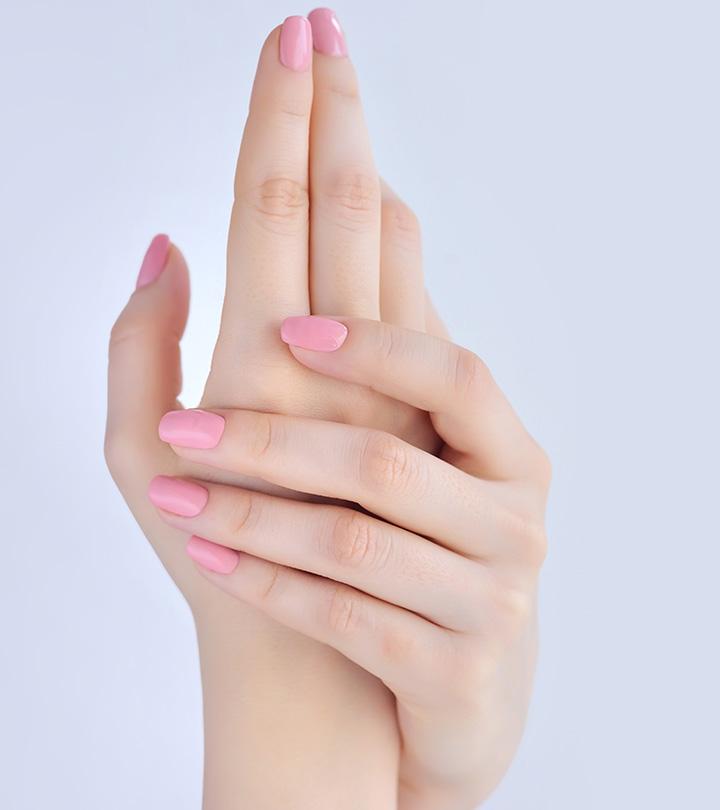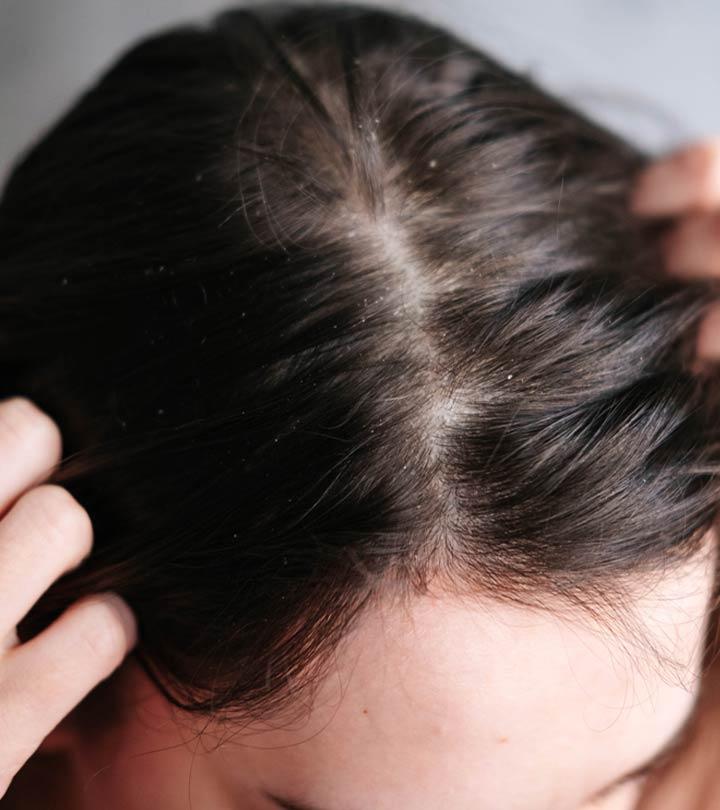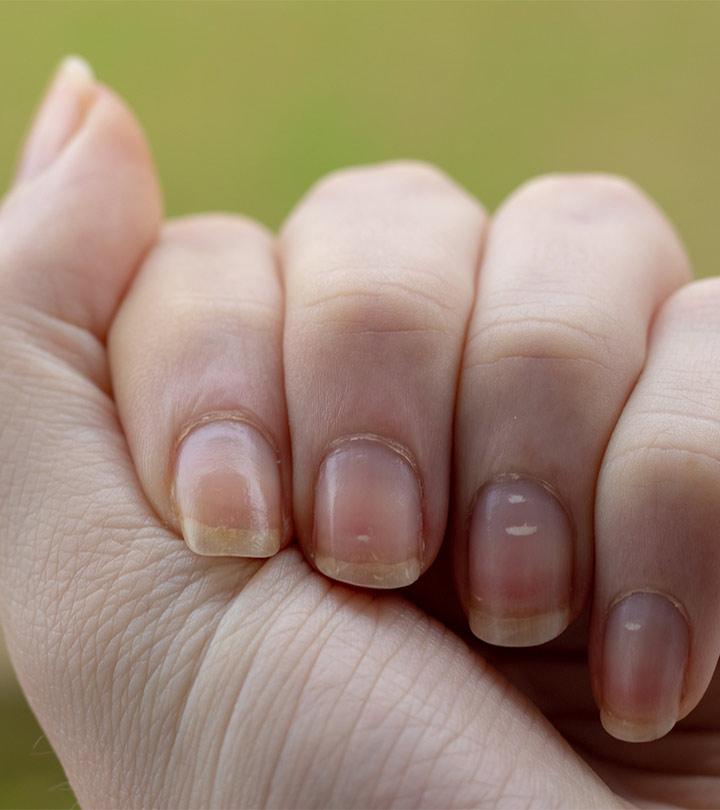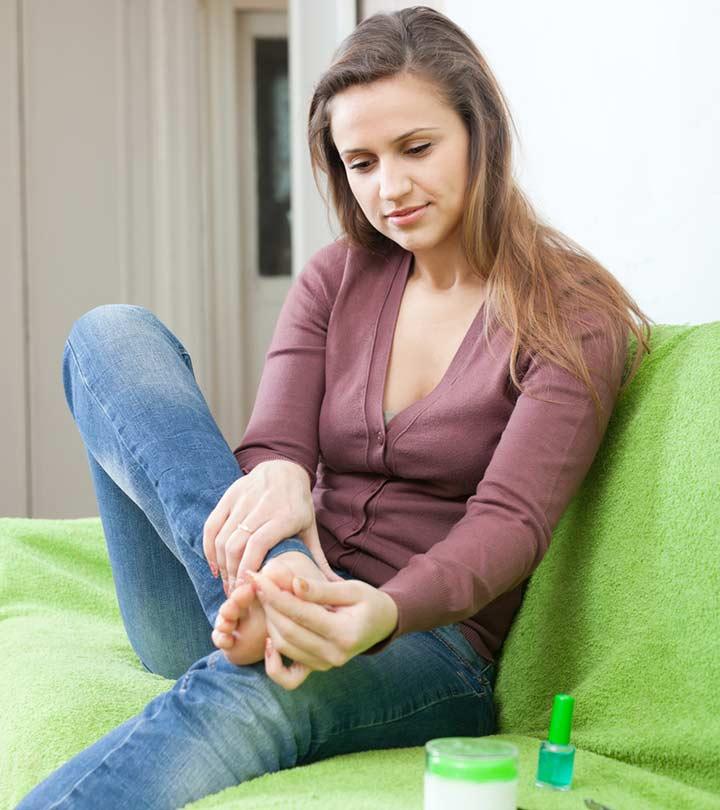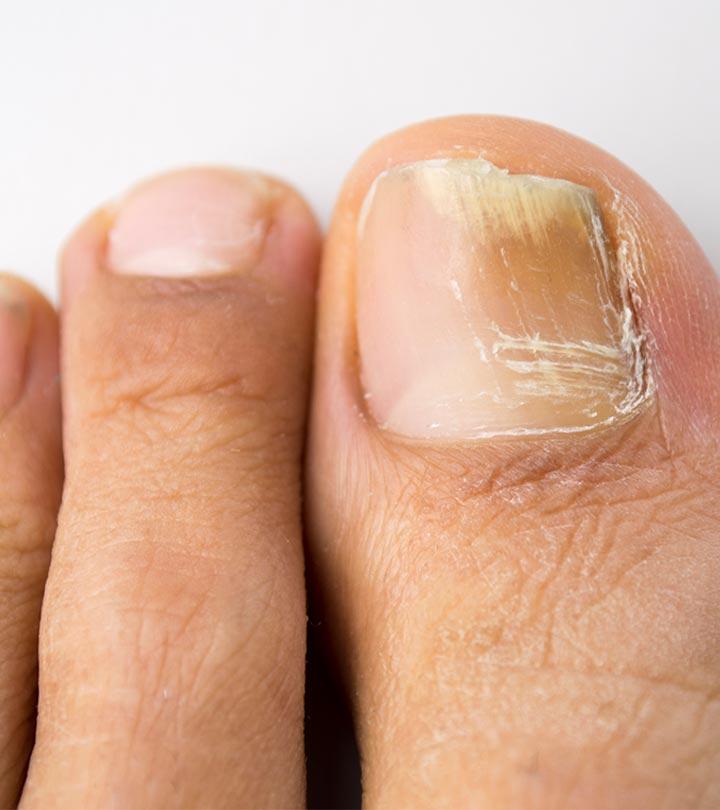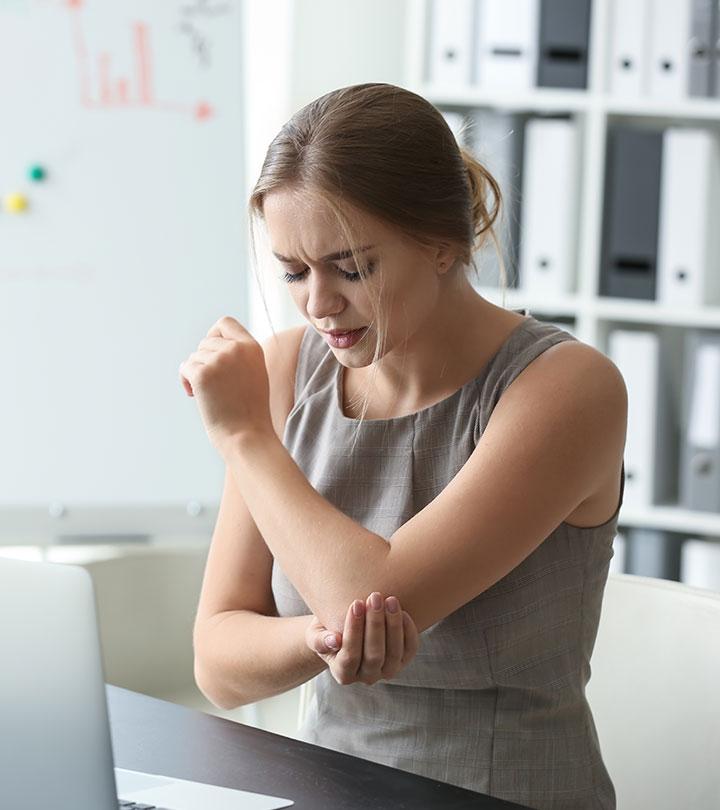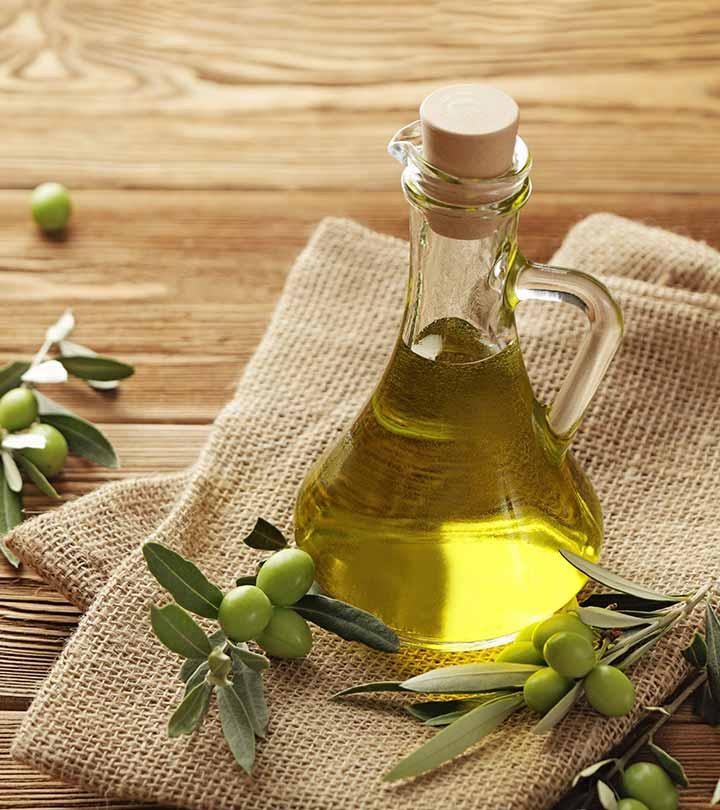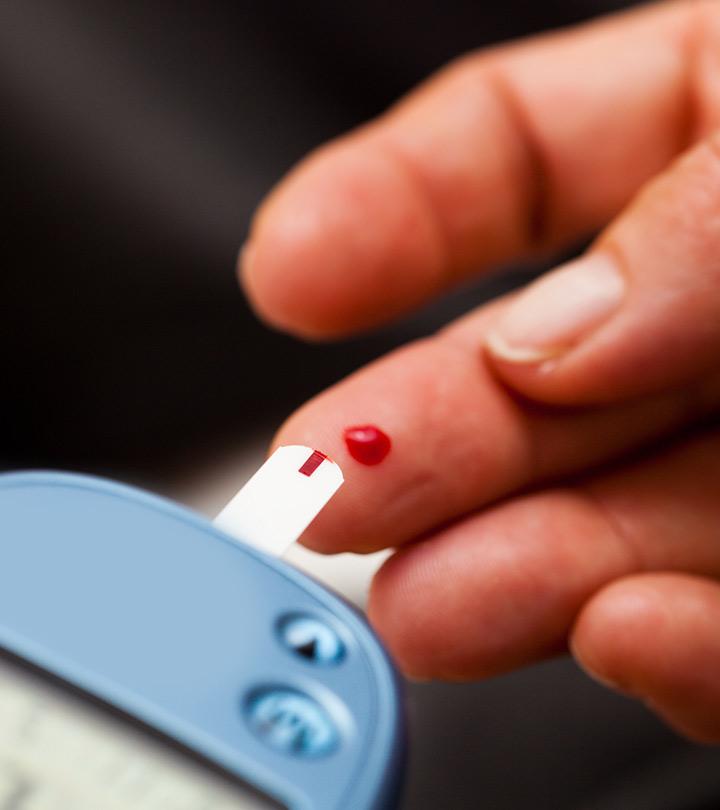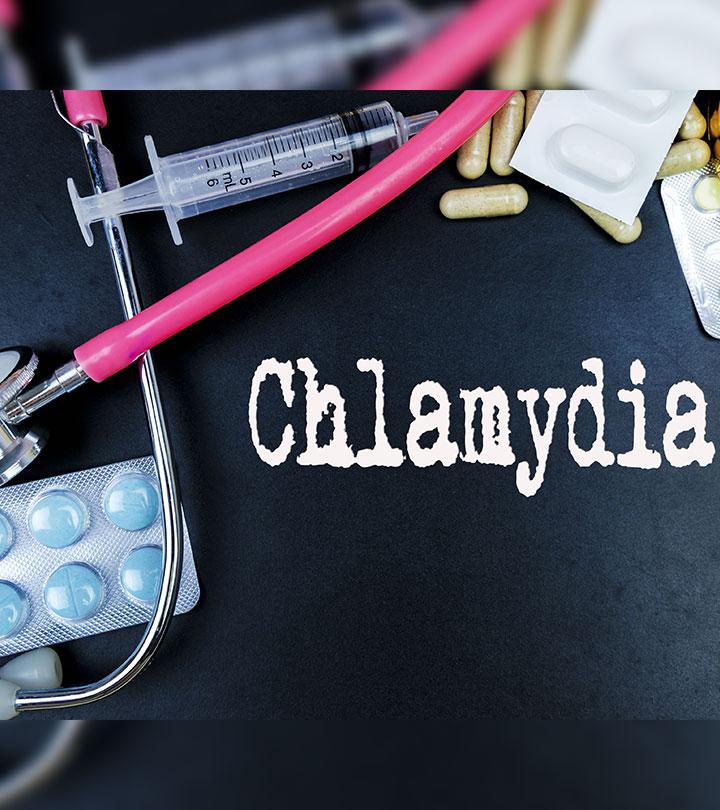10 Home Remedies For Rosacea That Prevent Redness On The Skin
Combat the redness and flare-ups with simple and safe natural ingredients at home.
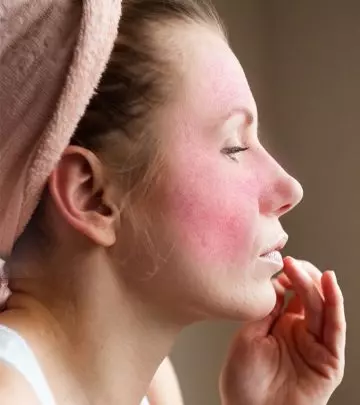
Image: Shutterstock
If you are here looking for home remedies for rosacea, we got your back! Rosacea is a common skin condition that leads to redness and visible blushing of your skin. According to the National Rosacea Society, around 415 million people worldwide are estimated to be dealing with rosacea (1). While avoiding the triggers like excessive heat, stress, and alcohol consumption may help avoid flareups; certain home remedies may soothe the symptoms. Read on to get a better idea.
In This Article
What Is Rosacea?
Rosacea is an inflammatory chronic skin condition. It usually affects the face and is more common in fair-skinned people. Most affected individuals confuse rosacea with acne, eczema, or skin allergy due to which treatment can be delayed. Rosacea tends to worsen with time if left untreated for too long.
While this condition can affect people of any age, it usually affects middle-aged fair-skinned women.
A study published in the National Library of Medicine found that more than 16 million people in the US alone suffer from rosacea with a peak incidence rate of 18% globally, especially in groups with a predominance of “Celtic” ancestry. Furthermore, it is estimated that the worldwide prevalence may exceed over 5% with both men and women being equally affected.
Let’s take a quick look at the symptoms.
Signs And Symptoms
One of the most prominent signs of rosacea is that your cheeks and sometimes your chin, nose, and forehead become red. In rare cases, your chest, neck, ears, or head may also become red.
Other symptoms associated with rosacea are:
- The appearance of broken blood vessels on your skin
- Swelling and/or thickening of the broken vessels
- Redness, swelling, or pain in your eyes
- A stinging or burning sensation on your skin
- Some patches of your skin may become dry and rough
- Your pores become larger
- Small bumps around your eyelids
These symptoms can be mild to severe, and you may see them come and go from time to time. However, leaving rosacea untreated can cause these symptoms to become permanent.
Doctors and researchers are yet to determine what exactly causes rosacea. The following factors are believed to play a significant role in causing this condition.
Causes And Risk Factors
Factors that can contribute to the onset of rosacea are:
- Genetics – A family history of the condition
- Problems with your blood vessels that may worsen by sun damage
- Mites – There are mites (insects) living on all our faces. But some individuals may have more of them, which may cause irritation.
- Bacteria – A bacteria type called H. pylori lives in your gut. It can, at times, raise the levels of a digestive hormone called gastrin in your gut. This increase can cause your skin to look flushed.
Other risk factors for rosacea are:
- Possessing light skin, eyes, or hair
- Age – Those between 30 and 50 years of age are at a higher risk, though other ages can be affected as well.
- Gender – Women are more affected than men.
- Past acne lesionsi XChanges in the appearance of the skin due to damage or trauma, often without any underlying condition, such as mosquito bites.
- Smoking tobacco
- Medications like niacin, steroidsi XBiologically active compounds that resemble the hormones in the body and are generally used to treat inflammatory conditions. , excess antacids, or antibiotics
Rosacea is classified into four major types based on the symptoms each type exhibits.
Types Of Rosacea
- Erythematotelangiectatic Rosacea: It is characterized by redness and flushing of the skin, along with the appearance of blood vessels,
- Papulopustular Rosacea: This type causes redness and swelling of the skin that may also be accompanied by breakouts that look like acne.
- Phymatous Rosacea: It exhibits symptoms like thickening of the skin and a bumpy or coarse texture.
- Ocular Rosacea: Individuals affected by ocular rosacea may look like they have a stye. It is known to cause irritation and inflammation of the eyes and swelling of the eyelids.
There is no cure for rosacea, but treatment can help manage most of its symptoms.
Here’s a list of herbal home remedies for those looking for natural alternatives to manage rosacea.
How To Manage Rosacea Naturally
- Apple Cider Vinegar
- Turmeric
- Ginger
- Aloe Vera Gel
- Raw Honey
- Burdock
- Chamomile
- Comfrey
- Green Tea
- Oatmeal
Home Remedies To Manage Rosacea Symptoms
1. Apple Cider Vinegar
You Will Need
- 1-2 teaspoons of raw apple cider vinegar
- 1 glass of warm water
- Honey (optional)
What You Have To Do
- Add a teaspoon or two of raw apple cider vinegar to a glass of warm water.
- Mix well and drink the solution.
- You can add honey to improve the flavor of the mixture.
How Often You Should Do This
You can consume this once daily before meals.
Why This Works
The powerful anti-inflammatory properties of apple cider vinegar are no secret. Many individuals swear by it to treat inflammatory conditions like rosacea (5).
2. Turmeric
You Will Need
250-500 mg turmeric (curcumin) supplement
What You Have To Do
- Take 250-500 mg turmeric supplement daily.
- Alternatively, you can mix a teaspoon of turmeric powder with water and drink it.
- You can also make a paste of turmeric with licorice root and yogurt and apply it to the affected skin.
How Often You Should Do This
You must take turmeric once daily for its anti-inflammatory benefits. Seek your doctor’s advice before taking the supplement.
Why This Works
The curcumin in turmeric imparts exceptional anti-inflammatory properties to it (8). Turmeric can soothe inflammation whether it is consumed or applied topically.
3. Ginger
You Will Need
- 1-2 inches of ginger
- 1 cup of water
What You Have To Do
- Add 1 to 2 inches of ginger to a cup of water.
- Bring it to a boil in a saucepan.
- Simmer for a few minutes and strain.
- Drink the hot ginger tea once it cools down a little.
How Often You Should Do This
You must ideally drink this 2 to 3 times daily.
Why This Works
Gingerol, the active compound in ginger, exhibits anti-inflammatory activities that can alleviate swelling, inflammation, and redness caused by rosacea (9).
4. Aloe Vera Gel
You Will Need
Aloe vera gel (as required)
What You Have To Do
- Wash your face with a mild cleanser.
- Take some aloe vera gel and apply it to the affected skin.
- Leave it on for 30 to 40 minutes and rinse it off.
How Often You Should Do This
Apply aloe vera gel to your skin twice daily.
Why This Works
Aloe vera exhibits wonderful anti-inflammatory and healing properties due to its beneficial composition. It is thus another great option to manage rosacea symptoms (10).
 Quick Tip
Quick Tip5. Raw Honey
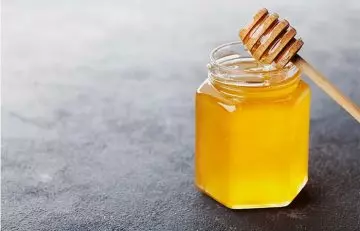
You Will Need
Raw honey (as required)
What You Have To Do
- Take some raw honey and apply it evenly to cleansed skin.
- Leave it on for at least 30 minutes before rinsing it off.
How Often You Should Do This
Do this twice daily for best results.
Why This Works
Raw honey, especially manuka honey has been used for centuries to treat various skin problems (11). Honey has anti-inflammatory and healing properties that help manage the symptoms of rosacea (12).
6. Burdock
You Will Need
- 1-2 teaspoons of burdock root
- 2 cups of water
What You Have To Do
- Add one to two teaspoons of burdock root to a cup of water.
- Bring it to a boil in a saucepan.
- Simmer for about 5-10 minutes and strain.
- Allow the tea to cool down for a while and then drink it.
How Often You Should Do This
You must drink this 2 to 3 times daily for a couple of weeks to see results.
Why This Works
Burdock has anti-inflammatory properties that can help reduce swelling and inflammation in your body (13).
7. Chamomile
You Will Need
- 1-2 teaspoons of chamomile tea
- 1 cup of water
What You Have To Do
- Add one to two teaspoons of chamomile tea to a cup of water.
- Bring it to a boil in a saucepan and simmer for a few minutes.
- Strain and allow the tea to cool a bit.
- Drink it.
- You can also use chamomile tea as a toner or compress.
How Often You Should Do This
You can drink chamomile tea twice daily.
Why This Works
Chamomile is an herb with medicinal properties. It contains volatile essential oils that possess anti-inflammatory properties, which can help in dealing with the symptoms of rosacea (14).
8. Comfrey
You Will Need
Comfrey oil or creams containing comfrey
What You Have To Do
- Wash your face with a mild cleanser.
- Pat your skin dry and apply some comfrey oil/cream to it evenly.
How Often You Should Do This
You can do this 2 to 3 times daily.
Why This Works
Comfrey contains compounds like allantoin and rosmarinic acid, which exhibit soothing and anti-inflammatory properties that can help soothe swollen and inflamed skin (15).
9. Green Tea
You Will Need
- 1 teaspoon of green tea
- 1 cup of water
- Cotton balls
What You Have To Do
- Add a teaspoon of green tea to a cup of steaming hot water.
- Steep for 5 to 7 minutes and strain.
- Refrigerate the green tea for an hour.
- Soak a cotton ball in some cold green tea and apply it all over your face.
- Leave it on for 30 minutes before washing it off.
How Often You Should Do This
You can do this twice daily.
Why This Works
Green tea polyphenolsi XA class of organic compounds found in plant-based food that protects the body from UV radiation due to their antioxidant properties. possess anti-inflammatory activities that can help reduce inflammation, swelling, and redness that surface with rosacea (16).
10. Oatmeal
You Will Need
- ½ cup of ground oats
- ¼ cup of water
What You Have To Do
- Grind half a cup of oats.
- Blend the powdered oats with one-fourth cup of water.
- Apply the oatmeal mixture to the affected areas.
- Leave it on for at least 20-30 minutes before rinsing it off.
How Often You Should Do This
You can apply an oatmeal mask twice weekly.
Why This Works
Oats contain phenolic compounds called avenanthramides that exhibit anti-inflammatory and anti-itch properties. These activities can help reduce inflammation, swelling, and irritation caused by rosacea (17).
In addition to these remedies, following an anti-inflammatory diet can also help a great deal in alleviating the symptoms of rosacea.
Best Diet For Rosacea
What To Eat
Anti-inflammatory foods that can help reduce rosacea flare-ups include:
- Berries
- Cardamom
- Zucchini
- Turmeric
- Nuts
- Melons
- Garlic
- Leafy green veggies
- Grapes
- Asparagus
- Coriander
- Celery
- Probiotics (yogurt, kefir, fermented foods)
Also including foods rich in Vitamin C and zinc may help with the condition (18), (19).
Julie B Campbell, a blogger, shared how she plans to try a customized anti-inflammatory diet to control her rosacea condition. She writes, “So here’s the plan: I’m going to follow my own unique form of anti-inflammatory rosacea diet that is somewhat of a combination of the MIND Diet and Dr. Weil’s Anti-Inflammatory Diet. At the same time, I’m tweaking the strategy so that it will exclude (or limit) foods that are known rosacea triggers for me (i).” For example, instead of red wine, she would try eating red grapes.
In another blog post of hers, she adds, “I do make conscious food choices with anti-inflammatory foods in mind and have also made a concerted effort to reduce my intake of added sugars (not the natural stuff found in fruit, but the added stuff to sweeten products) (ii).”
Foods rich in omega-3 fatty acids can also help reduce inflammation. These foods include:
- Fatty fish like salmon
- Ghee
- Fish oil
- Flaxseed oil
- Walnuts
- Chia seeds
What To Avoid
Some foods can have a negative impact on your condition and can aggravate the flare-ups. Hence, it is best to avoid such foods. They include:
- Sugary foods
- Refined foods
- Hot beverages
- White rice and pasta
- Processed vegetable oils
- Carbonated drinks
- Processed meat
- Food sweeteners, preservatives, and additives
- Spicy foods
- Alcohol
- Foods that increase your body temperature like tea, coffee, cinnamon, tomatoes, citrus fruits, and chocolate
Foods that contain histamine or cause your body to release more of it can worsen symptoms of skin flushing and redness. Avoid these foods:
- Avocado
- Papaya
- Cheese
- Milk
- Buttermilk
- Sardines
- Shellfish
- Strawberries
- Tuna
- Vinegar
If your condition does not improve after following these methods, you should consult your doctor for personalized treatment options. Learn more about the treatment methods that they may suggest.
Rosacea Treatment Methods
Your healthcare provider might recommend topical treatments to alleviate inflammation. These include brimonidine and oxymetazoline for erythema (superficial skin redness), and ivermectin, azelaic acid, or metronidazole for inflammatory papules and pustules.
Ocular involvement (when the eyes get infected) may be managed with artificial tears and specific topical agents. For severe cases, systemic treatments like propranolol and clonidine, and antibiotics like doxycycline, minocycline, tetracycline, azithromycin, or even isotretinoin may be prescribed.
Surgical intervention might be necessary during instances of phyma (enlarged nose tissue). Procedures like laser therapy and intense pulsed light can effectively target the persistent redness and visible blood vessels and enhance the quality of life in those with rosacea (20).
You can also follow a few tips to prevent your condition from worsening. These tips involve making simple changes to your lifestyle.
Tips To Manage Rosacea
- Always wear a sunscreen with SPF 30 or more for sun protection.
- Protect your face with a scarf during extreme winters.
- Refrain from rubbing or touching your face too often.
- Use a gentle cleanser to wash your face.
- Avoid using products that contain alcohol or any other skin irritants.
- Use a moisturizer if your skin is too sore.
- Use non-comedogenici XThe property of a cosmetic product or ingredient that does not have the potency to clog pores on the skin. cosmetics and skin care products.
- Keep your skin cool.
- Exercise and practice yoga for stress management.
- Do low-intensity exercises that do not leave you feeling exhausted.
 Quick Tip
Quick TipInfographic: Top 5 Remedies For Rosacea
Rosacea is a chronic skin disorder that causes pimples, irritation, and facial redness and can be exasperating and uncomfortable. However, you can manage this condition with the help of some kitchen ingredients and positive lifestyle changes. Check out the infographic below to learn more about the most effective ways to reduce rosacea flare-ups.

Illustration: StyleCraze Design Team
Rosacea, an inflammatory skin condition that makes the skin turn red when exposed to certain triggers, mostly affects middle-aged women with light skin. There are a few different types of this condition, categorized based on the symptoms that are presented. Home remedies for rosacea cannot cure this condition but can help manage the symptoms like dry patches on the skin, redness, swelling, burning or stinging sensations, and the appearance of broken blood vessels. Turmeric, ginger, aloe vera gel, coconut oil, jojoba oil, honey, chamomile, lavender, grapeseed extract, rosehip oil, tea tree oil, evening primrose oil, calendula, witch hazel, milk thistle, green tea, and apple cider vinegar are among the most popular and effective alternative remedies to manage rosacea.
Discover natural remedies to recover from acne and rosacea in the video below. Learn about five effective ways to heal your skin without antibiotics or topical creams and restore its natural radiance.
Frequently Asked Questions
Can rosacea be cured?
Rosacea cannot be cured, but early treatment can help in controlling and managing the signs and symptoms of this chronic skin condition.
What is the best antibiotic for rosacea?
Your doctor may prescribe low-dose antibiotics like tetracycline, doxycycline, and minocycline because these medications exhibit anti-inflammatory effects.
How can I reduce the redness on my face fast?
You can reduce the redness on your face by following any of the remedies discussed in the article and sticking to the prevention and diet tips.
Does rose water help rosacea?
Yes, rose water can also help in dealing with rosacea symptoms with its soothing properties. It is ideal for those with sensitive skin.
When to visit a dermatologist for rosacea?
If the remedies and tips mentioned in this article do not soothe your symptoms, it is best to consult a dermatologist immediately for medical assistance to treat your condition.
Does Vaseline help rosacea?
Applying Vaseline may help reduce the redness associated with rosacea. However, it won’t cure the condition.
What happens if you leave rosacea untreated?
Untreated rosacea may worsen your symptoms. The skin redness may become permanent and more noticeable, and you may notice breakouts.
Is rosacea a symptom of something else?
No, rosacea is not a symptom of something else.
Does rosacea worsen with age?
The symptoms of rosacea are not the same for everyone. However, untreated rosacea may worsen with age.
Does drinking water help rosacea?
Drinking water does not cure rosacea. However, it may help improve the skin and reduce redness to some extent.
Key Takeaways
- Knowing what causes and provokes Rosacea is the beginning of the solution.
- Keeping up a strong skincare regimen contributes to improvement in Rosacea.
- Using organic components, including cucumber, aloe vera, green tea, honey, and chamomile, can be of great help.
- Lowering anxiety and using relaxation methods have positive effects.
- Avoiding triggers and irritants, such as alcohol and spicy food, can reduce symptoms of Rosacea.
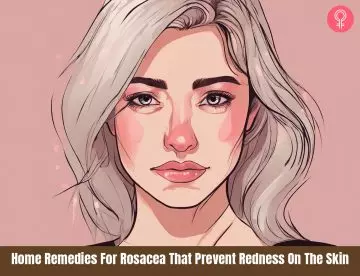
Image: Stable Diffusion/StyleCraze Design Team
Personal Experience: Source
StyleCraze's articles are interwoven with authentic personal narratives that provide depth and resonance to our content. Below are the sources of the personal accounts referenced in this article.
i. Giving an Anti-Inflammatory Rosacea Diet a Try!https://greenjuliebc.com/2015/11/16/giving-an-anti-inflammatory-rosacea-diet-a-try/ii. What I Eat in a Day – Rosacea Trigger-Free (for me)
https://greenjuliebc.com/2016/06/22/what-i-eat-in-a-day-rosacea-trigger-free-for-me/
References
Articles on StyleCraze are backed by verified information from peer-reviewed and academic research papers, reputed organizations, research institutions, and medical associations to ensure accuracy and relevance. Read our editorial policy to learn more.
- “New Study Finds 415 Million People May Suffer from Rosacea Worldwide”, National Rosacea Society
- “Suppression of inflammatory reactions by terpinen-4-ol, the main constituent of tea tree oil, in a murine model of oral candidiasis and its suppressive activity to cytokine production of macrophages in vitro”, Biological and Pharmaceutical Bulletin, US National Library of Medicine
- “Antioxidant, analgesic and anti-inflammatory effects of lavender essential oil”, Anais da Academia Brasileira de Ciências, US National Library of Medicine
- “Effect of lavender scent inhalation on prevention of stress, anxiety and depression in the postpartum period”, Iranian Journal of Nursing and Midwifery Research, US National Library of Medicine
- “Rosacea Patient Perspectives on Homeopathic and Over-the-counter Therapies”, Journal of Clinical and Aesthetic Dermatology, US National Library of Medicine
- “A randomized double-blind controlled trial comparing extra virgin coconut oil with mineral oil as a moisturizer for mild to moderate xerosis”, Dermatitis, US National Library of Medicine
- “Anti-inflammatory, analgesic, and antipyretic activities of virgin coconut oil”, Pharmaceutical Biology, US National Library of Medicine
- “Anti-inflammatory properties of curcumin, a major constituent of Curcuma longa: a review of preclinical and clinical research”, Alternative Medicine Review, US National Library of Medicine
- “Analgesic and anti-inflammatory activities of [6]-gingerol”, Journal of Ethnopharmacology, US National Library of Medicine
- “Antiinflammatory activity of extracts from Aloe vera gel”, Journal of Ethnopharmacology, US National Library of Medicine
- “Honey: A Therapeutic Agent for Disorders of the Skin”, Central Asian Journal of Global Health, US National Library of Medicine
- “Analgesic and anti-inflammatory effects of honey: the involvement of autonomic receptors”, Metabolic Brain Disease, US National Library of Medicine
- “Anti-inflammatory and radical scavenge effects of Arctium lappa”, American Journal of Chinese Medicine, US National Library of Medicine
- “Chamomile: A herbal medicine of the past with bright future”, Molecular Medicine Reports, US National Library of Medicine
- “Comfrey: A Clinical Overview”, Phytotherapy Research, US National Library of Medicine
- “Anti-inflammatory Action of Green Tea”, Anti-Inflammatory & Anti-Allergy Agents in Medicinal Chemistry, US National Library of Medicine
- “Avenanthramides, polyphenols from oats, exhibit anti-inflammatory and anti-itch activity”, Archives of Dermatological Research, US National Library of Medicine
- “Vitamin C in dermatology”, Indian Dermatology Online Journal, US National Library of Medicine
- “Zinc Therapy in Dermatology: A Review” Dermatology Research and Practice, US National Library of Medicine
- “Rosacea” US National Library of Medicine





